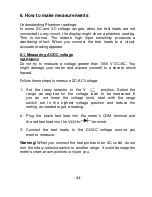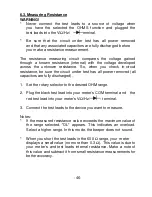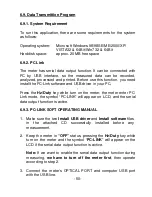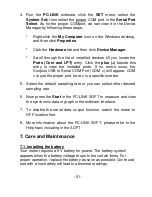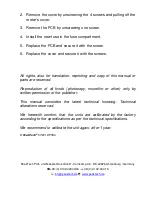
6.4. Checking diodes
This function lets you check diodes and other semiconductors for
opens and shorts. It also lets you determine the forward voltage for
diodes. You can use this function when you need to match diodes.
1. Set the rotary selector to the
Ω
/
/
°
))) position.
2. Press SELECT until occurs.
3. Plug the black test lead into your meter’s COM terminal and the
red test lead into your meter’s V/
Ω
/Hz/ -terminal.
4. Connect the test leads to the diode you want to check and
note the meter reading.
Notes:
* If the display shows a value for example 0.2 for a
germanium diode or 0.5 for a silicon diode, reverse the diode. If
the meter indicates an overrange, the diode is good. The
displayed number is the diode’s actual forward voltage (up to
2.0 volts).
* If the display indicates an overrange condition, reverse the
polarity of the connection. If the display shows a value, the device
is good. The displayed value is the component’s actual forward
voltage (up to 2.0 volts). If the display still indicates an overrange
condition, the device is open.
* If the display shows a value both before and after you reverse the
polarity, the device is shorted.
When you connect the diode to the meter and the meter displays the
devices forward voltage, the red test lead is connect to the diode’s
anode, and the black test lead is connected to the diode’s cathode.
This meter supplies enough forward voltage to light most LED´s.
However, if the LED’s forward voltage is greater than 2.0 volts, the
meter incorrectly indicates that the device is open.
-47-












